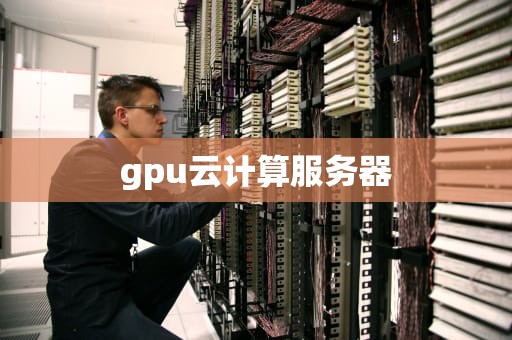2023年免费GPU云服务器推荐:如何零成本获取高性能算力?

在人工智能(AI)、深度学习(Deep Learning)和大规模数据分析领域,GPU(图形处理器)的计算能力远超传统CPU(中央处理器)。然而对于个人开发者、学生或初创团队而言,“购买高性能GPU硬件”往往面临高昂的成本门槛——一张NVIDIA RTX 4090显卡价格过万;企业级A100/H100显卡更是动辄数十万元。
此时,“免费GPU云服务器”成为突破算力瓶颈的绝佳选择:
- 零硬件投入:无需购买设备即可访问高端算力(如Tesla T4/V100);
- 灵活扩展性:按需分配资源应对短期高负载任务;
- 开发环境预配置:主流平台集成TensorFlow/PyTorch框架及Jupyter Notebook工具链;
- 协作与分享便捷性:支持团队远程共享数据和模型训练进度。
以下为2023年已验证可用的主流服务清单(附使用技巧与避坑指南):
- 资源规格:基础版提供Tesla T4/K80 GPU + 12GB内存(每周约30小时免费额度);Pro版付费后可解锁V100/A100及更高优先级。
- 适用场景:中小型深度学习模型训练/教育用途/快速原型验证。
- 核心优势:
- 完全基于浏览器操作;
- 直接集成Google Drive存储与GitHub同步;
- 支持PyTorch/Keras/OpenCV等主流库一键安装。
- 避坑提示:
- 长时间无操作会断开连接(需定期保存中间结果);
- 高负载任务可能触发“内存不足”警告(建议优化Batch Size)。
- 资源规格:每周30小时Tesla P100 GPU + 20GB存储空间。
- 适用场景:数据科学竞赛/公开数据集分析/轻量级模型调优。
- 内置数千个公开数据集;
- 社区活跃度高(可参考他人开源代码);
- Notebook支持离线运行模式。
- 限制条件:禁止挖矿或非研究类商业用途。
- 资源规格:每月250小时ml.t3.medium实例 + 50小时GPU加速实例(需申请配额)。
- 适用场景:AWS生态用户/A/B测试模型部署。
- S3存储无缝衔接;
- 可快速迁移至付费实例避免中断。
- 注意事项:需绑定信用卡验证身份(不产生费用)。
- 资源规格:学生认证后获$100信用额度+12个月免费B1s虚拟机(可选NC6系列GPU)。
- 适用场景:学术研究/长期项目开发。
- 关键步骤:通过学校邮箱注册→申请Azure for Students→创建虚拟机时选择“GPU Optimized”类型。
- 资源规格:注册即送$10信用额度(约可使用V100 GPU实例10小时)。
- 适用场景:短期高密度计算需求(如论文实验冲刺阶段)。
- 技巧提示: 通过GitHub学生认证可额外获得$50额度。
- 资源规格: 提交研究计划并通过审核后获最多100小时RTX 5000使用权。
- 适用人群: 高校实验室/非营利AI项目团队。
即使获得免费的GPU算力,“低效使用”仍可能导致任务中断或结果丢失。以下是提升稳定性的关键策略:
```python
checkpoint = {
'epoch': epoch,
'model_state_dict': model.state_dict(),
'optimizer_state_dict': optimizer.state_dict(),
'loss': loss,
}
torch.save(checkpoint, 'checkpoint.pth')
from google.colab import drive
drive.mount('/content/drive')
```
安装`gpustat`库实时查看显存占用:
```bash
!pip install gpustat
!gpustat -i
若发现显存爆满但计算负载低时:
The user is experiencing an issue where their GPU memory is full, but the computational load is low. This situation can arise due to several reasons, and here are the possible solutions:
1. Check for Memory Leaks:
The most common cause of high memory usage with low computation is memory leaks in the code. This can happen if tensors or variables are not being released properly after use.
- Solution: Use tools like `torch.cuda.empty_cache()` to manually clear unused memory. Also, ensure that all intermediate variables that are no longer needed are deleted using `del variable_name`.
2. Reduce Batch Size:
A large batch size can consume a lot of GPU memory even if computations are not intensive.
- Solution: Decrease the batch size in your data loader to reduce memory consumption.
3. Mixed Precision Training:
Using mixed precision training can reduce memory usage by utilizing lower-precision (FP16) calculations where possible.
```python
from torch.cuda.amp import autocast, GradScaler
scaler = GradScaler()
for data, target in dataloader:
optimizer.zero_grad()
with autocast():
output = model(data)
loss = loss_fn(output, target)
scaler.scale(loss).backward()
scaler.step(optimizer)
scaler.update()
```
4. Gradient Accumulation:
If reducing the batch size isn't feasible, gradient accumulation allows you to simulate a larger batch size by accumulating gradients over multiple batches before updating weights.
accumulation_steps = 4
for i, (data, target) in enumerate(dataloader):
output = model(data)
loss = loss_fn(output, target)
loss = loss / accumulation_steps
loss.backward()
if (i+1) % accumulation_steps == 0:
optimizer.step()
optimizer.zero_grad()
5. Model Pruning or Simplification:
If the model itself is too large for the available GPU memory, consider simplifying the architecture or using model pruning techniques to reduce the number of parameters.
6. Profile Memory Usage:
Use profiling tools to identify which parts of the code are consuming the most memory.
from torch.profiler import profile, record_function, ProfilerActivity
with profile(activities=[ProfilerActivity.CUDA], profile_memory=True) as prof:
print(prof.key_averages().table(sort_by="cuda_memory_usage", row_limit=10))
7. Check for Unnecessary Data Storing:
Avoid keeping unnecessary data on the GPU, such as storing all intermediate outputs during evaluation.
8.Use DataLoader with Pinned Memory:
Sometimes using pinned memory can help in faster data transfer and better memory management.
dataloader = DataLoader(dataset, batch_size=32, pin_memory=True)
9.Model Checkpointing with `torch.utils.checkpoint`:
This technique trades compute for memory by recomputing intermediate activations during backward pass instead of storing them.
from torch.utils.checkpoint import checkpoint
def forward_pass(x):
output = checkpoint(forward_pass, input_tensor)
10.Update Libraries and Drivers:
Ensure that you're using the latest versions of PyTorch/CUDA drivers which might have optimizations or bug fixes related to memory management.
By systematically applying these solutions—starting from checking for memory leaks and adjusting batch sizes to employing advanced techniques like mixed precision and gradient accumulation—the user should be able to resolve high GPU memory usage issues even when computational load is low.
多数平台按全局负载分配资源——避开欧美工作时间段(如北京时间21:00至次日9:00)可提高成功率。
本地开发完成后打包为Docker镜像上传至云端运行:
```dockerfile
FROM nvidia/cuda:11.8.0-base
RUN apt-get update && apt-get install python3-pip -y
COPY requirements.txt .
RUN pip install -r requirements.txt
WORKDIR /app
例如将Colab用于数据预处理+SageMaker进行分布式训练+Lambda Labs完成最终微调。
尽管上述服务宣称“免费”,仍需警惕潜在问题:
1. 数据隐私风险: FDA/医疗类敏感数据禁止上传至公共平台;
2. 突发中断损失: Google Colab可能随时终止长时间任务;
3. 隐性成本陷阱: AWS/Azure超限后会自动扣费。
若项目进入商业化阶段或涉及核心算法保护,“付费私有云+竞价实例”(如GCP Preemptible VMs)的综合成本可能低于自建机房80%。
合理利用免费GPU云服务器能显著加速个人技术成长与早期产品验证周期。核心原则是“明确需求→匹配平台规则→做好容灾备份”。对于持续增长的算力需求,“混合云策略”(公有云弹性扩容+本地轻量级设备调试)将成为未来主流趋势。
TAG:免费gpu云服务器,gpu云服务器哪家便宜,gpu云服务器租用,gpu云计算服务器
随着互联网的普及和信息技术的飞速发展台湾vps云服务器邮件,电子邮件已经成为企业和个人日常沟通的重要工具。然而,传统的邮件服务在安全性、稳定性和可扩展性方面存在一定的局限性。为台湾vps云服务器邮件了满足用户对高效、安全、稳定的邮件服务的需求,台湾VPS云服务器邮件服务应运而生。本文将对台湾VPS云服务器邮件服务进行详细介绍,分析其优势和应用案例,并为用户提供如何选择合适的台湾VPS云服务器邮件服务的参考建议。

工作时间:8:00-18:00
电子邮件
1968656499@qq.com
扫码二维码
获取最新动态
